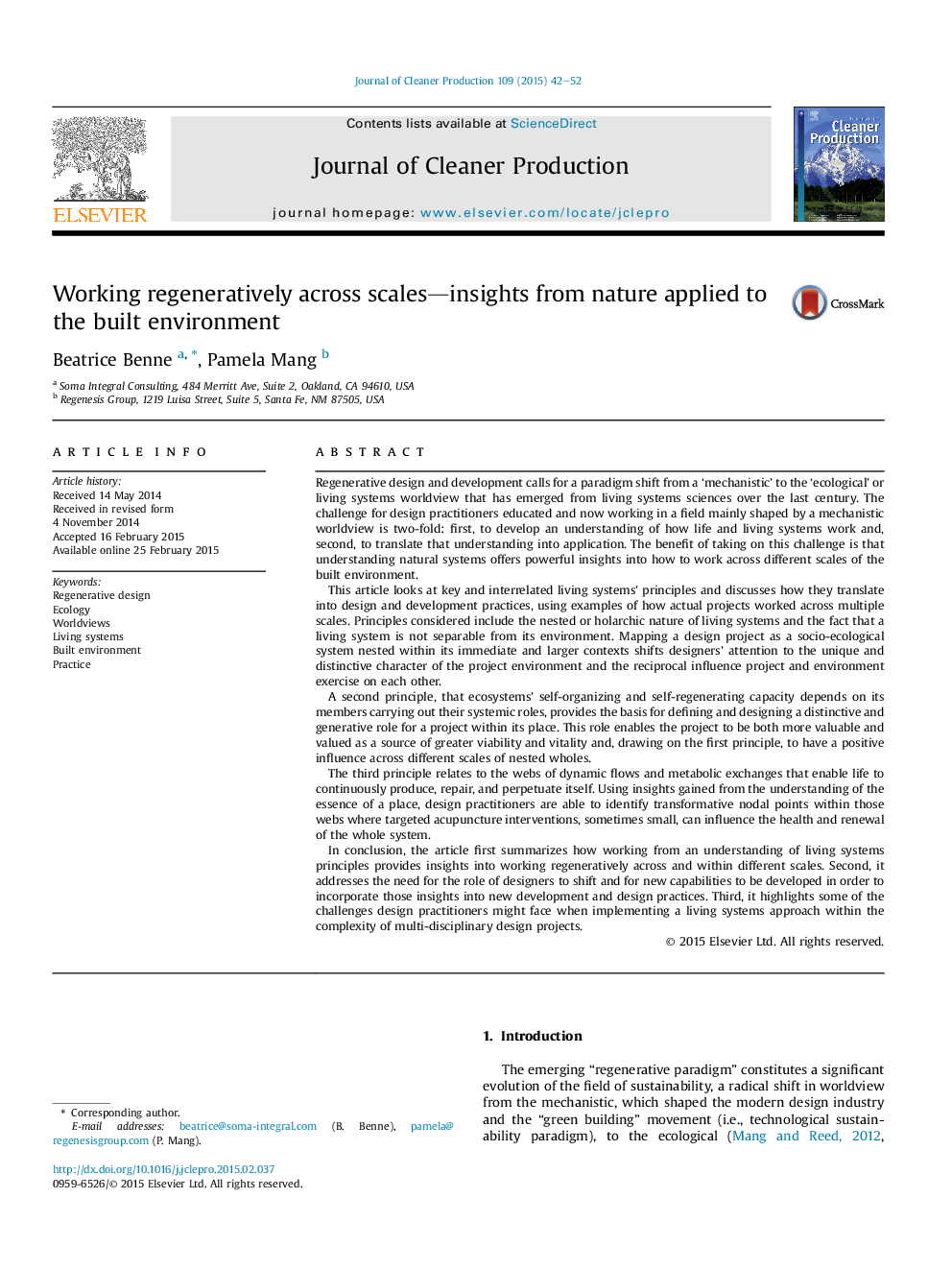| کد مقاله | کد نشریه | سال انتشار | مقاله انگلیسی | نسخه تمام متن |
|---|---|---|---|---|
| 1744494 | 1522138 | 2015 | 11 صفحه PDF | دانلود رایگان |
• To work regeneratively across scales requires embracing an ecological worldview.
• Design projects are socio-ecological systems nested within larger systems.
• Projects have a unique role in contributing to the vitality of places.
• Interventions at nodal points influence the health and renewal of whole systems.
• Designers must develop the capacity to work with complex dynamic living systems.
Regenerative design and development calls for a paradigm shift from a ‘mechanistic’ to the ‘ecological’ or living systems worldview that has emerged from living systems sciences over the last century. The challenge for design practitioners educated and now working in a field mainly shaped by a mechanistic worldview is two-fold: first, to develop an understanding of how life and living systems work and, second, to translate that understanding into application. The benefit of taking on this challenge is that understanding natural systems offers powerful insights into how to work across different scales of the built environment.This article looks at key and interrelated living systems' principles and discusses how they translate into design and development practices, using examples of how actual projects worked across multiple scales. Principles considered include the nested or holarchic nature of living systems and the fact that a living system is not separable from its environment. Mapping a design project as a socio-ecological system nested within its immediate and larger contexts shifts designers' attention to the unique and distinctive character of the project environment and the reciprocal influence project and environment exercise on each other.A second principle, that ecosystems' self-organizing and self-regenerating capacity depends on its members carrying out their systemic roles, provides the basis for defining and designing a distinctive and generative role for a project within its place. This role enables the project to be both more valuable and valued as a source of greater viability and vitality and, drawing on the first principle, to have a positive influence across different scales of nested wholes.The third principle relates to the webs of dynamic flows and metabolic exchanges that enable life to continuously produce, repair, and perpetuate itself. Using insights gained from the understanding of the essence of a place, design practitioners are able to identify transformative nodal points within those webs where targeted acupuncture interventions, sometimes small, can influence the health and renewal of the whole system.In conclusion, the article first summarizes how working from an understanding of living systems principles provides insights into working regeneratively across and within different scales. Second, it addresses the need for the role of designers to shift and for new capabilities to be developed in order to incorporate those insights into new development and design practices. Third, it highlights some of the challenges design practitioners might face when implementing a living systems approach within the complexity of multi-disciplinary design projects.
Journal: Journal of Cleaner Production - Volume 109, 16 December 2015, Pages 42–52
